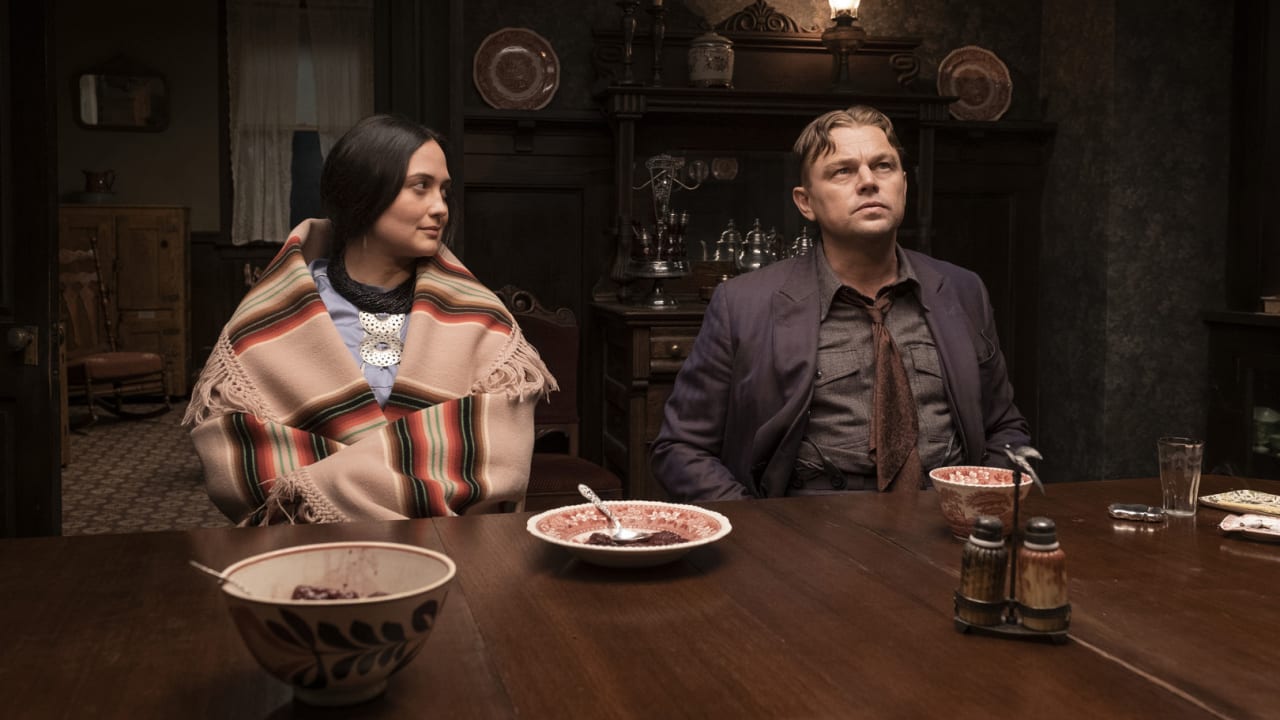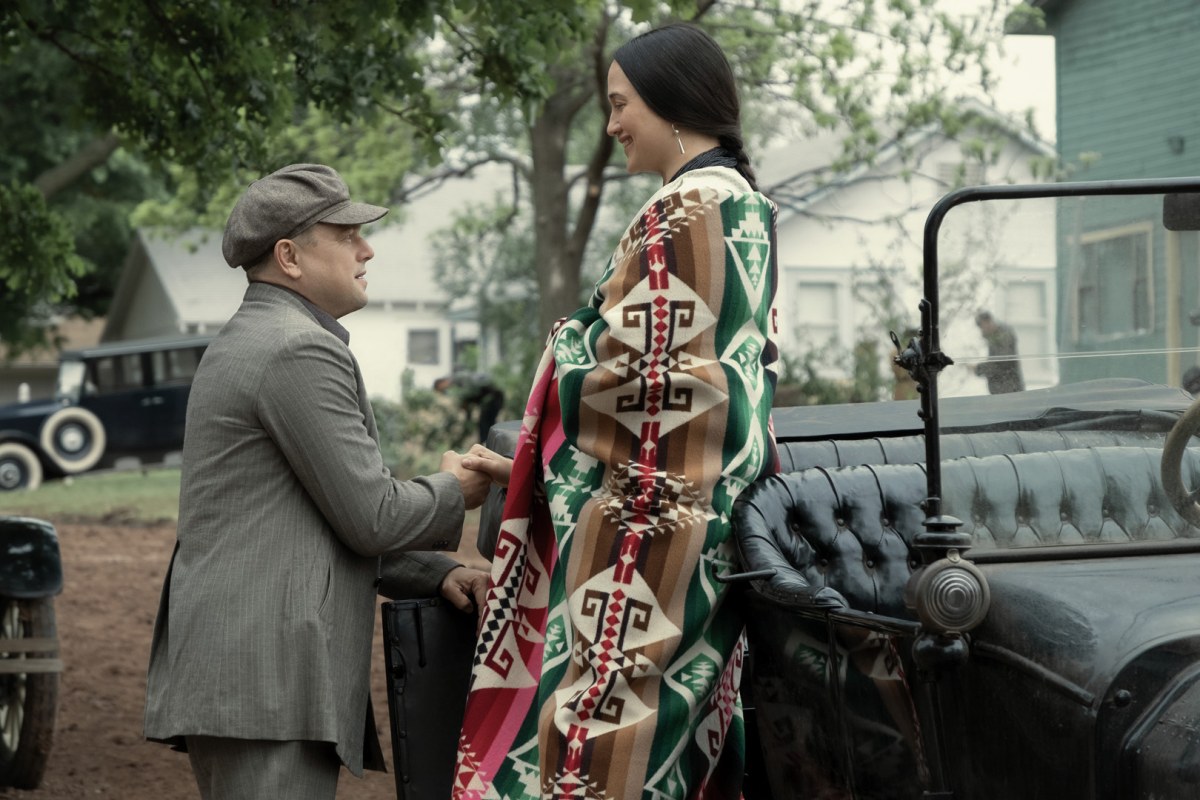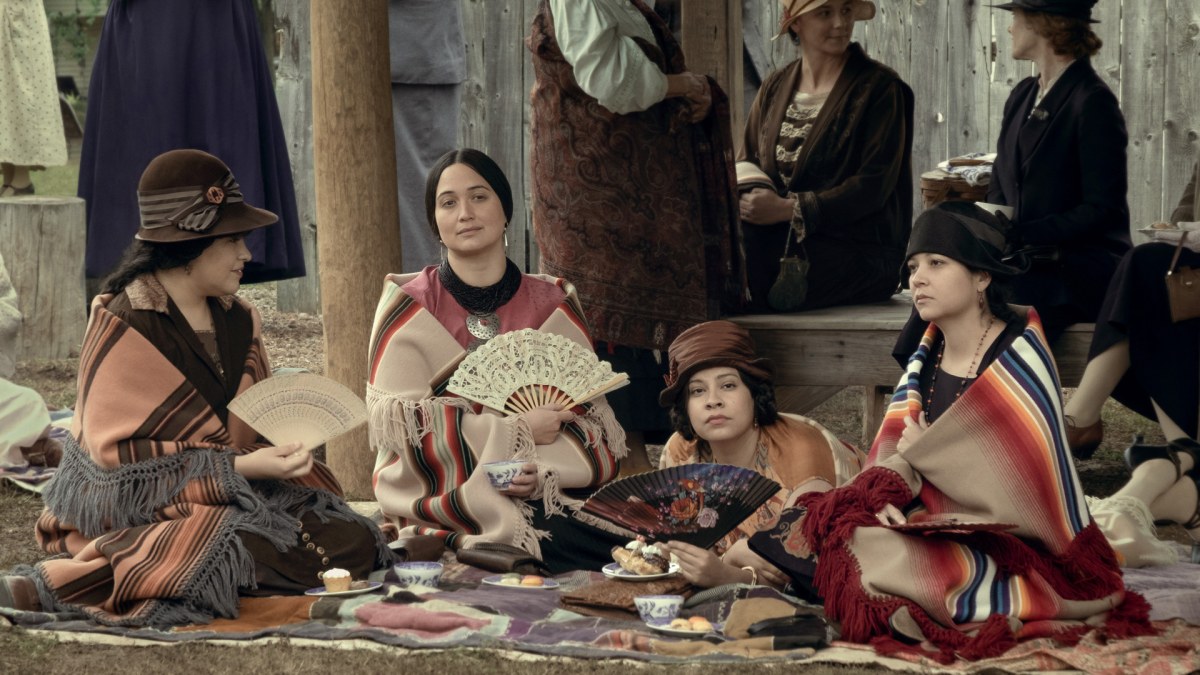How Martin Scorsese’s ‘Killers of the Flower Moon brought Osage Nation

It’s common on movie sets for caterers to buy large amounts of cheap food from big distributors to feed the cast and crew, but that’s not what happened on the set of Killers of the Flower Moon.
Martin Scorsese’s new film, which opens October 20, centers on the rash of murders on the Osage Nation reservation in the early 1900s. For filming, he scouted locations in and around the Osage Nation, which is based in Northeast Oklahoma, and he cast Indigenous actors. Many components of the film showcase the Osage culture: The language spoken in the film was taught by Osage Nation teachers and traditional clothing was made by Osage artists.
Even the food had elements of the Osage Nation.

Leonardo DiCaprio and Lily Gladstone in Killers of the Flower Moon, premiering in theaters on October 20, 2023 [Photo: Apple TV+]
In a unique partnership between the filmmakers and the tribe, the Osage Nation’s Harvest Land farm provided the filmmakers with produce from their greenhouse, including tomatoes, squash, cucumbers, and microgreens, according to Harleigh Moore-Wilson, the food sovereignty coordinator for the Osage Nation. They provided 900 pounds of produce to the cast and crew over the course of filming, which took place over about a six-month period in 2021.
The Osage Nation used Cares Act funding—money that was earmarked to help governments, business, and individuals weather Covid-19—to open the working farm in 2020. Harvest Land, which cost $13.5 million to construct, includes a 40,000-square-foot greenhouse and a 44,000-square-foot building that contains a large aquaponics system, a food processing area, and a water lab. An orchard with fruit and nut trees is also located on the farm. Harvest Land sells fresh produce and homemade canned goods at farmers markets, mobile farmers markets, and through an online store.

[Photo: courtesy Harvest Land]
During the height of the pandemic, the tribe experienced bottlenecks in getting food to the reservation, which is considered a food desert, or an area with limited access to nutritious and affordable foods. “There’s three grocery stores in Osage County, and Osage County is larger than the state of Rhode Island,” says Moore-Wilson. “We are very, very rural.”
During filming of Killers of the Flower Moon, the set’s chefs also utilized Harvest Land’s commercial kitchen to make some of the meals, which included dishes like corn succotash with summer squash, beans, onions, and herbs, and Osage bison bolognese with roasted rainbow peppers and elephant garlic—all of which were from Harvest Land.
Moore-Wilson says that working with the film crew helped the Harvest Land team better understand how the process of growing food was connected to their history.

JaNae Collins, Lily Gladstone, Cara Jade Myers, and Jillian Dion in Killers of the Flower Moon [Photo: Apple TV+]
“It gave us the insight that if enough time and energy is put into something, then it will have the ability to thrive. This relates back to the Osage people starting to thrive once again after so much tragedy occurred,” she adds.
Sara Paul is the founder and CEO of 5 Carrots, a marketing company that works with organic and plant-based brands, particularly in the entertainment industry. She has worked on film sets since 2001 and says that food is often an afterthought and caterers tend to buy in bulk because it’s cheap, but the quality suffers.
She met with the Harvest Land team and then worked with chef Eric Lukowsky on Killers of the Flower Moon. “It was great to see the food being redirected from bigger corporations like Sysco and US Foods,” she says, referring to the food giants that often supply film and TV sets.
She believes that food should be one of the most important aspects to a movie set. “If you want a crew that’s happy, healthy, working hard—working 20 hours day after day in brutal conditions with bugs and mud and heat—you have to take care of them,” she says.

Still, not all the food served on set was grown locally. Some was flown in, including pineapples from Hawaii, says Moore-Wilson. The tops were being cut off, so the Osage Nation horticulturalist asked to save them. About 45 grew roots, and two years later, they’re being harvested.
Now, Osage Nation members and other community members are able to enjoy pineapples grown on Osage Nation land.
“We have those everlasting effects that now we are able to provide that type of fresh fruit to our community members,” says Moore-Wilson. “As we sell pineapples from our first crop, we are saving back all those tops to be able to start the process once again.”







